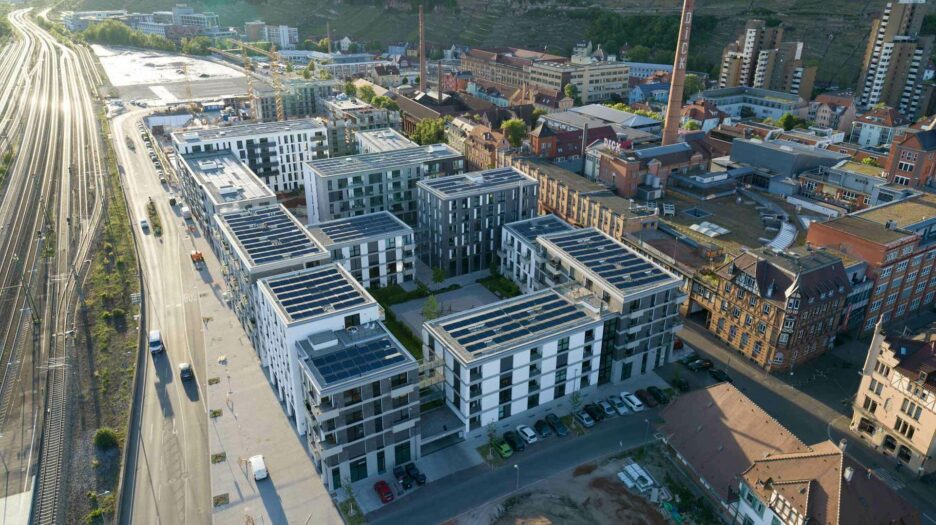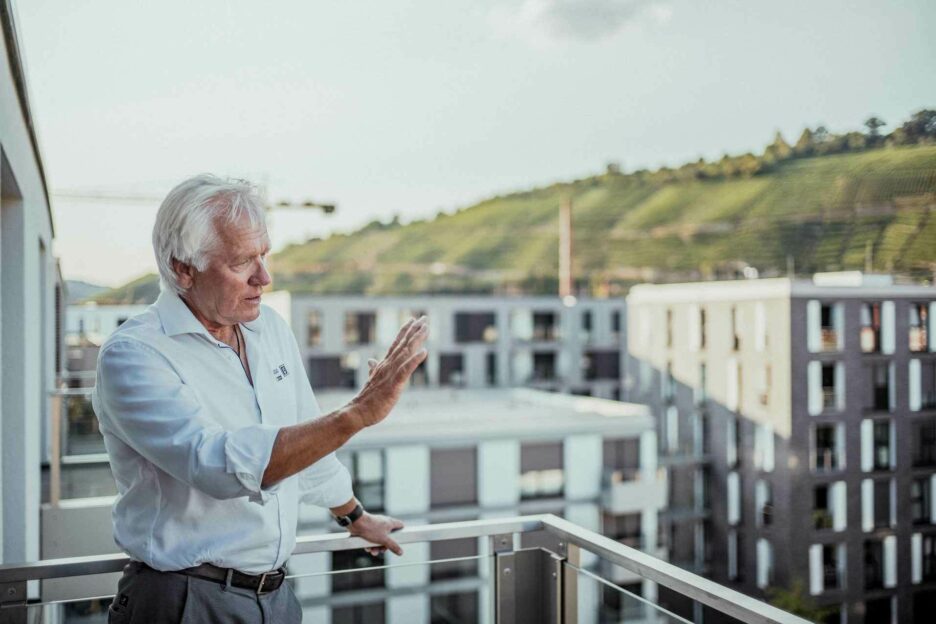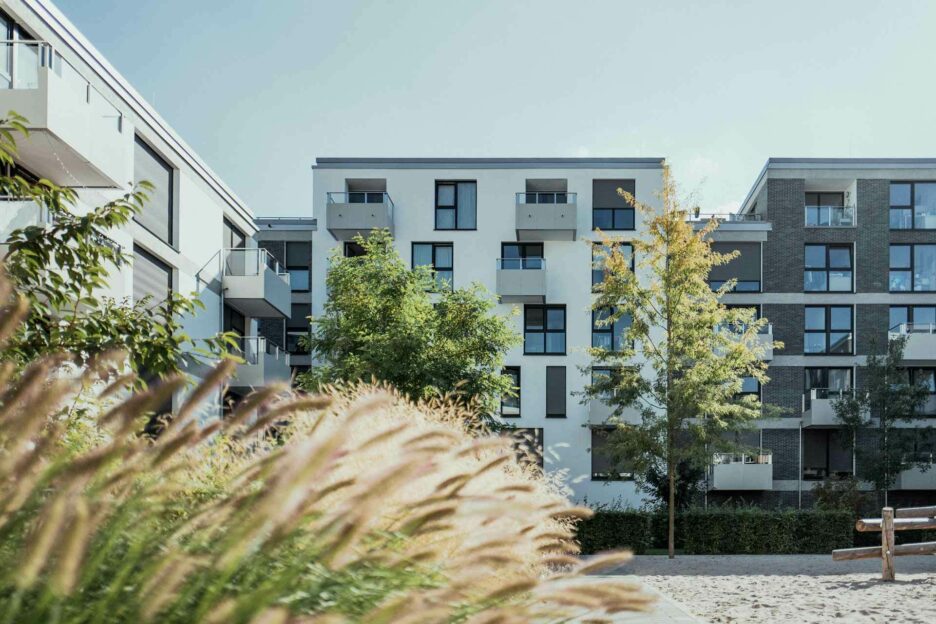Climate Quarter Neue Weststadt Esslingen
Back to project overviewProject description
Germany's first climate-neutral hydrogen district with 500 apartments, office and commercial space and a university is being built on the site of the former freight depot in Esslingen, covering an area of 12 hectares.
At the heart of the technologically innovative urban quarter is the energy supply concept developed by siz energieplus, which provides for the coupling of the electricity, heating, cooling and mobility sectors. As a special innovation, a 1,000 kWel electrolyzer will be integrated into the urban development, which converts renewable electricity into green hydrogen (200 - 400 kg/d). The electricity required for this comes from local PV systems in the buildings (approx. 1,500 kWp) and from generation plants that supply renewable electricity via the public power grid. The renewable waste heat from electrolysis at 55-60°C can cover half of the heating requirements of the buildings, which are connected to the underground energy center via a local heating network. This pioneering idea of heat integration means that the efficiency of electrolysis can be increased from approx. 55% to up to 90% for the first time. A 32 m³ pressure storage tank is used for short-term storage of the hydrogen produced under the operating pressure of the electrolysis at 11.5 bar. From there, a small proportion can be converted back into electricity on site in a combined heat and power plant. This is a 200 kWel hydrogen engine that can also burn certified biomethane. The hydrogen produced will be fed into the city's natural gas grid for seasonal long-term storage and decarbonization of the gas sector. In addition, the locally produced green hydrogen is to be made available for use in industry and mobility outside the district in the future.
The individual technical components (PV, electricity storage, electrolyzer, CHP, smart meter, e-charging stations) will be connected via a cross-sector digital information network ("smart grid"). A central energy management system controls the energy flows.
The lighthouse project is intended to show how modern living and sustainable working can be implemented in a CO2-neutral way in an urban context. The aim is to build a district with less than one tonne of CO2 emissions per resident per year for housing and mobility and to create affordable living space at the same time. The realization is an important building block for achieving the municipal climate protection goals and should be a shining example for future development projects and citizen participation processes in other municipalities. The holistic energy concept developed at siz energieplus is the first prototype based on the "Power - to - Gas and Heat" (PtG&H) approach and is intended to serve as a blueprint for future energy supply.
siz energieplus, Stuttgart is the overall scientific coordinator of the research project with a total of 12 partners (FKZ: 03SBE115 A to L, BMWi, BMBF) and is therefore involved in all areas of work. The most important work packages that siz is working on are listed below:
- Concretization of the district concept (AB 1)
- System planning (AB1)
- Energy networks (AB 2)
- Heat and power generation (AB 2)
- Development and implementation of monitoring concept (AB 3)
- Optimization (AB 3)
- Expansion of energy balancing (AB 4)
- Development of business models (AB 4)
- Validation of planning tool (AB 4)
- Workshops and specialist presentations (AB 5)
- Public relations (AB 5)
- Project coordination (AB 6)
- Neighborhood / city interface (AB 6)
- City of Esslingen
- RVI GmbH
- Berlin Institute for Social Research GmbH
- Esslingen University of Applied Sciences (Institute for Sustainable Energy Technology and Mobility)
- Esslingen am Neckar municipal transport company
- Polarstern GmbH
- mondayVision UG (limited liability)
- Center for Solar Energy and Hydrogen Research Baden Württemberg (ZSW)
- HyEnTec GmbH
- Green Hydrogen Esslingen GmbH
- Blumberg Agency
AB1: Concretization of the implementation
AB2: Implementation, commissioning and quality assurance
AB3: Monitoring and optimization
AB4: Further development of the "Stadtquartier" planning tool
AB5: Citizen participation & public relations
AB6: Coordination and utilization
Image source "Photo: Maximilian Kamps, Agentur Blumberg GmbH "


